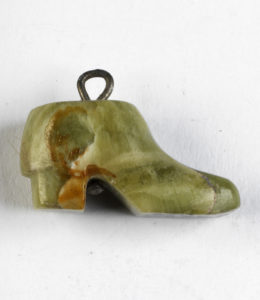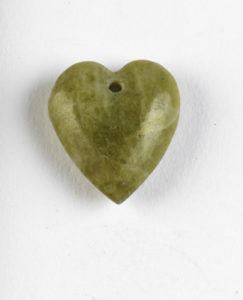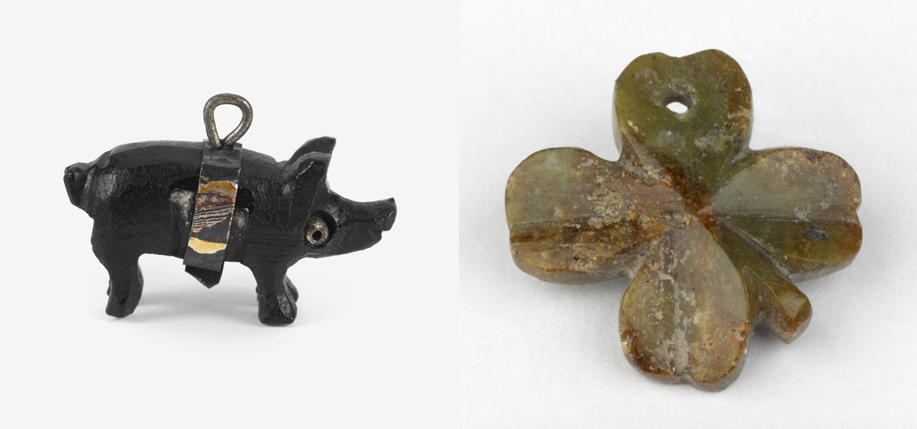What more fascinatingly intimate look into the lives of soldiers of WWI than a glimpse into the tokens they brought with them to battle from home?

Housed at the Imperial War Museum in London, the First World War Galleries are an extensively curated look at one of the darkest times in human history. Paul Cornish’s book, named for the galleries, dives into the treasures and at times the painful realities of WWI and the soldiers who fought it. The luck charms carried by some soldiers have made their way to the Imperial War Museum.
Many items featured in Cornish’s book were made of materials specific to a soldier’s homeland, a true piece of home. This perhaps was most true of the Irish soldiers, many of whom carried charms made from Irish materials such as small hearts carved from Connemara marble or figurines made of Irish bog-oak. Other trinkets like the four-leaf clover pictured below suggest an Irish heritage as well, though its owner is unknown.
The charms were collected during and after the war by British folklorist Edward Lovett, who had an affinity for charms, investigating their uses to cure illness or attract good or even bad luck. He was most interested in tracking how and to what extent country folklore had carried into working-class areas of his hometown of London. Working in a bank by day, Lovett gathered the would-be artifacts in his spare time.

In addition to the amulets carried during the war, the First World War Galleries at the Imperial War Museum house a wealth of archives, including film footage, oral histories, photographs, and personal documents and correspondence.
In addition to the amulets carried during the war, the First World War Galleries at the Imperial War Museum house a wealth of archives, including film footage, oral histories, photographs, and personal documents and correspondence.


Leave a Reply